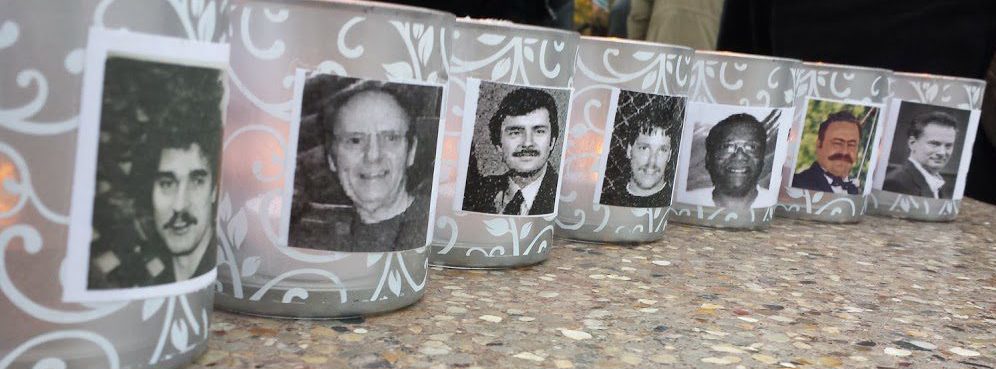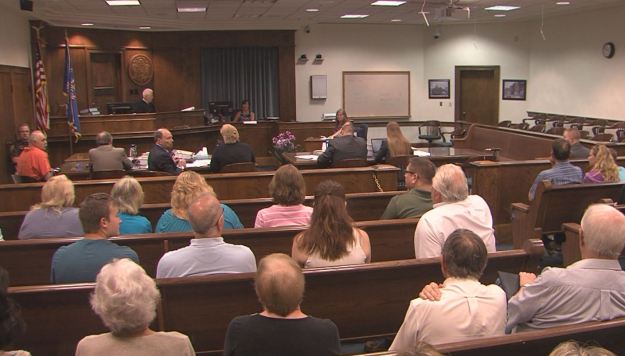Said the Advocate to the Parole Chair….
Each year for Christmas, I strive to find a unique gift to send to the five incarcerated Wisconsin men I advocate for. It’s a challenge to find something meaningful beyond a cheerful note and a suitable Christmas card. But each year the perfect gift does come to mind.
This year, their gift was one of action. Since all of them have now been granted parole hearings, they ask friends and loved ones to send letters of support to the parole commission on their behalf. So I did what I felt was most effective. I went straight to the top and sent a letter to the Chairperson of the Parole Commission himself; Mr. Dean Stensberg. Accompanying the letter was a summary compiled from notes I had taken during a recent evidentiary hearing from last July for Keith Kutska, one of the men convicted in the Monfils case.
Here’s the letter:
December 15, 2015
Mr. Dean Stensberg
Wisconsin Department of Corrections
3099 E. Washington Ave.
P.O. Box 7925
Madison, WI 53707-7925
Dear Mr. Stensberg,
I trust that this message finds you well.
My name is Joan Treppa. I am a citizen advocate for the wrongfully convicted. I live in Minnesota but for the past six years, I have advocated for the release of the five Wisconsin men convicted in the Tom Monfils murder case who remain behind bars; Keith Kutska, Reynold Moore, Dale Basten, Michael Hirn and Michael Johnson.
I was compelled to get involved in 2009 after reading the book; The Monfils Conspiracy. Despite my lack of education in the field of law, I recognized that this case was handled in the worst possible manner. In an attempt to find something that would cause me to believe that these convictions were justified, I talked with the authors of the book and I met the exoneree in the case, Michael Piaskowski. I then met with the family members of the men. But I found nothing. In fact, I found the opposite; the more I learned, the more I was convinced that this case is riddled with corruption and that all of these men are truly innocent.
In 2011, I hired a retired crime scene expert to re-investigate the case files. He did so thoroughly. And he confirmed my suspicions with the knowledge to make such a determination. So he helped me to find a law firm to represent one of the men, Keith Kutska—the lead suspect in the case.
In 2013, we were successful. We hired Attorney Steven Z. Kaplan from the law firm of Fredrikson&Byron, PA in Minneapolis to study the case. He spent more than two years combing through the details. His evaluation matched ours; that the case was suspect. But Mr. Kaplan went a bit further in his assessment when he was convinced that the victim, Tom Monfils, had indeed committed suicide.
Much of the evidence that was available at the time and that pointed to a possible suicide was never addressed during the trial. It should have been. Even Cal Monfils, the victim’s own brother tried to convince the lead detective that the knots on the rope and weight were most likely tied by his brother Tom. But the detective dismissed that notion and assured the one person who knew his own brother better than anyone else that they had already looked into it, when in fact, they had not. The rope and weight were sent to the crime lab. But when the crime lab came back with a recommendation to send the evidence to the Coast Guard, because the knots were determined to be nautical knots, that action was never taken. Let me clarify; those critical pieces of evidence were never sent to a lab that could have properly identified them.
A thorough investigation would have also included doing a psychological evaluation of Tom Monfils. That was never done. If one had been done, it would have been clear that he had emotional issues and that he was a prime example of someone with suicidal tendencies; he had been in counseling, he kept to himself, his marriage was in shambles, and now he was being chastised for snitching on a co-worker. He died in a manner familiar to him from his Coast Guard days. He was part of a team that retrieved fellow officers who had jumped ship by tying heavy objects around their necks in an attempt to commit suicide.
A case like this is tragic beyond words. Many lives have been devastated because of it. And the injustice continues as each parole hearing comes and goes with no relief for any of these men. There is no consideration of the actual facts. There is no recognition of the flaws that have been laid out in a recent evidentiary hearing for all to see. There is no justice for these men.
These men do not lie when they profess their innocence. But in the criminal justice system, there seems to be no patience for those who stand by that claim. But these men do so, despite their understanding that it will mean a longer prison term. Is it so hard to understand that they will never fail their own conscience; that they will never sacrifice their integrity and that they will never admit to something they did not do?
I stand by these men and will do so as long as they seek freedom. I believe they will see that day come because I believe in them. I believe in everything they stand for. And I believe they are innocent.
I’ve included a summary I compiled last summer in regards to the evidentiary hearing. I hope you take the time to read it and learn about the many facets of this case that were never covered properly.
When these men do come up for parole, it should be clear to those who stand in judgement of them exactly why they stand firm in their innocence. My aim is to provide that knowledge. And I urge the commission to release all of these men as soon as possible.
Thank you for your time.
Happy Holidays.
Update: A week later, on December 22nd, Mr. Stensberg called me on the phone to acknowledge my letter. He was pleasant and expressed his appreciation for my support of these men. He explained that my actions are an important aspect of the parole process, etc…but what was clear to me was that my letter had struck a chord. After all, he could’ve brushed me off with a formal and hollow response. So I expressed my gratitude and allowed him to continue.
Mr. Stensberg voiced his concern about taking the proper legal steps on behalf of the men. I felt he had missed the jist of my detailed letter. He then contended that it is not the responsibility of the parole board to determine guilt or innocence but to decide through a number of factors whether adequate time has been served, given the crime committed. He did not specifically identify those factors but my recollection of them as stated on the parole commission website, are as follows:
Criteria for parole:
- Reached the Parole Eligibility Date in his or her sentence.
- Served sufficient time for punishment of his or her crime(s).
- Shown positive changes in behavior as well as documented progress in programming, treatment and/or educational achievement.
- A viable parole plan which offers the offender realistic opportunities for a stable residence, employment, and programming, if needed.
- An acceptably reduced level of risk to the public. The criteria for determining risk include past criminal and incarceration record, probation and parole violations, security classification, and any unmet treatment or programs needs.
As he spoke, I thought of how all of these men have satisfactorily fulfilled these directives, some having gone well above and beyond and how they are still being denied parole. But the reality for those truly innocent, like the men in this case who refuse to admit guilt for a crime they didn’t commit, this program is merely a façade, a formality, giving outsiders the impression that it’s about rehabilitation.
Who within this organization would ever admit to an unwritten rule preventing early release for inmates asserting their innocence? On the contrary, this is viewed as an inmates inability or outright refusal to show remorse. Just ask any exoneree.
During our discussion my impression of this man wasn’t reassuring as he firmly stressed the integrity of his office and the seriousness with which they enact the commission’s responsibilities. There was no point in pushing back. It was hopeless and served no purpose. For the time being, keeping this communication line open, did.
In conclusion, Stensberg reassured me,”We are watching the Monfils case closely and we are concerned with the aging men.” But as I listened, my understanding was that Mr. Stensberg was trying to convince me of something far fetched. I wasn’t buying it and I realized that nothing would ever change for these men regarding parole.
My last statement to this man was one of urgency to release these men as soon as possible. But now, in a recent visit to the Wisconsin Dept. of Corrections website, I noticed Mr. Dean Stensberg is no longer Commission Chairperson. Back to square one…


